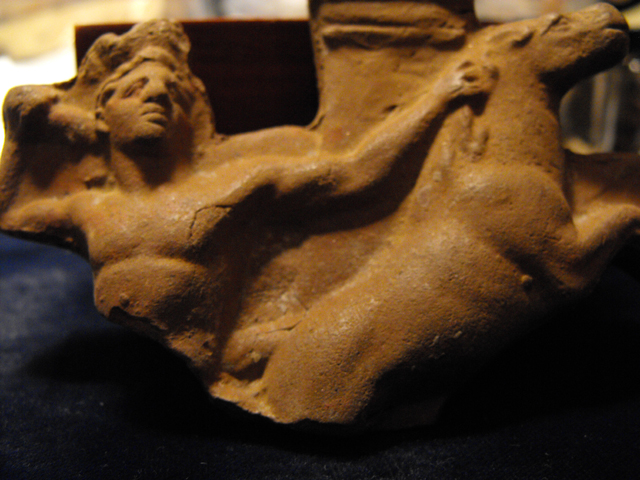
Alexander the Great on Horseback Lifetime Portrait c. 336 B.C.
greek, macedonian, alexander, terracotta, museum
OF GREAT HISTORICAL IMPORTANCE
Alexander III of Macedon, son of Philip II, student of the Greek philosopher Aristotle; in 336 B.C. his father was assassinated, and Alexander took the throne, shortly after which, he conquered the entire known world, then promptly died at Babylon while preparing to take all Arabia, apparently of calicheamicin poisoning after a night-long binge of drinking, at the tender age of 32.
Aristotle is thought to have been one of the conspirators.
He was short and stocky, had one brown eye and one blue, a twisting distortion of the neck made him appear as if to always be looking upward, and he was paranoid, suspicious and by all accounts, a raving megalomaniac with a penchant for self-idolizing; he believed himself to be a god, which was confirmed by a local seer.
From the age of 13, the young Alexander was tutored by the captive Greek philosopher, Aristotle — his compatriots, Isocrates and Speusippus had refused — in exchange for which Philip would restore Aristotle’s hometown of Stageira which had been destroyed to ground level by Philip, a probable multiple motive for Aristotle’s part in the conspiracy to murder Alexander.
Was Alexander gay? No more so than any other ancient ruler; it was not at that time considered odd or unusual for a person to be bisexual, especially true at orgies.
You will not find anything even close to this incredibly important terra-cotta statuary anywhere on the open market; it should be endowed to a museum on passing, which is part of the deal. It was produced during Alexander’s lifetime.
$9,500.00

